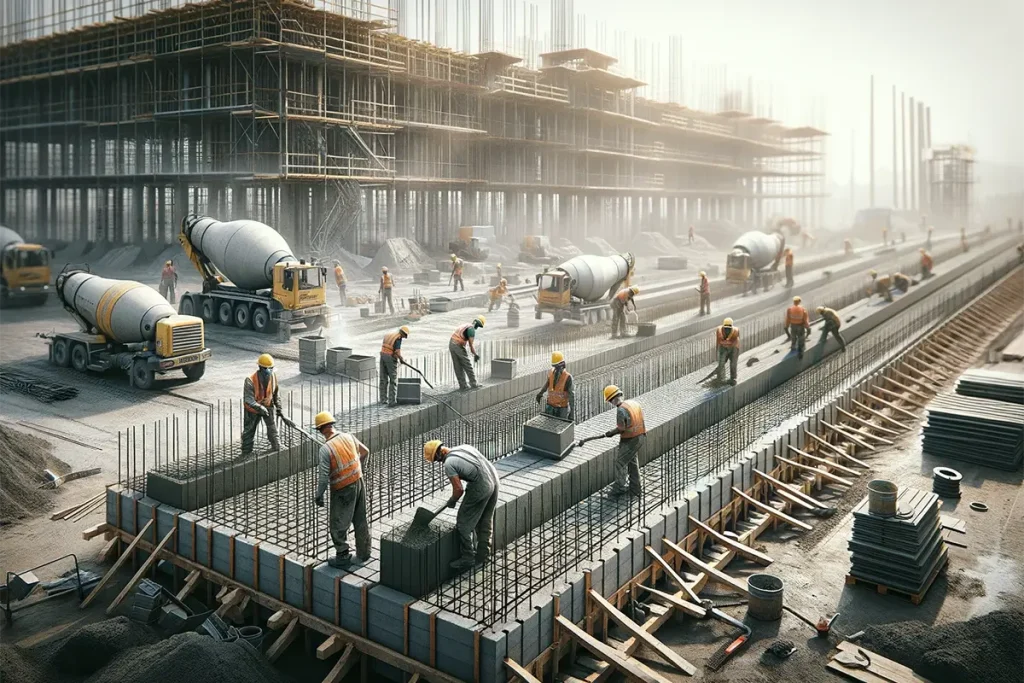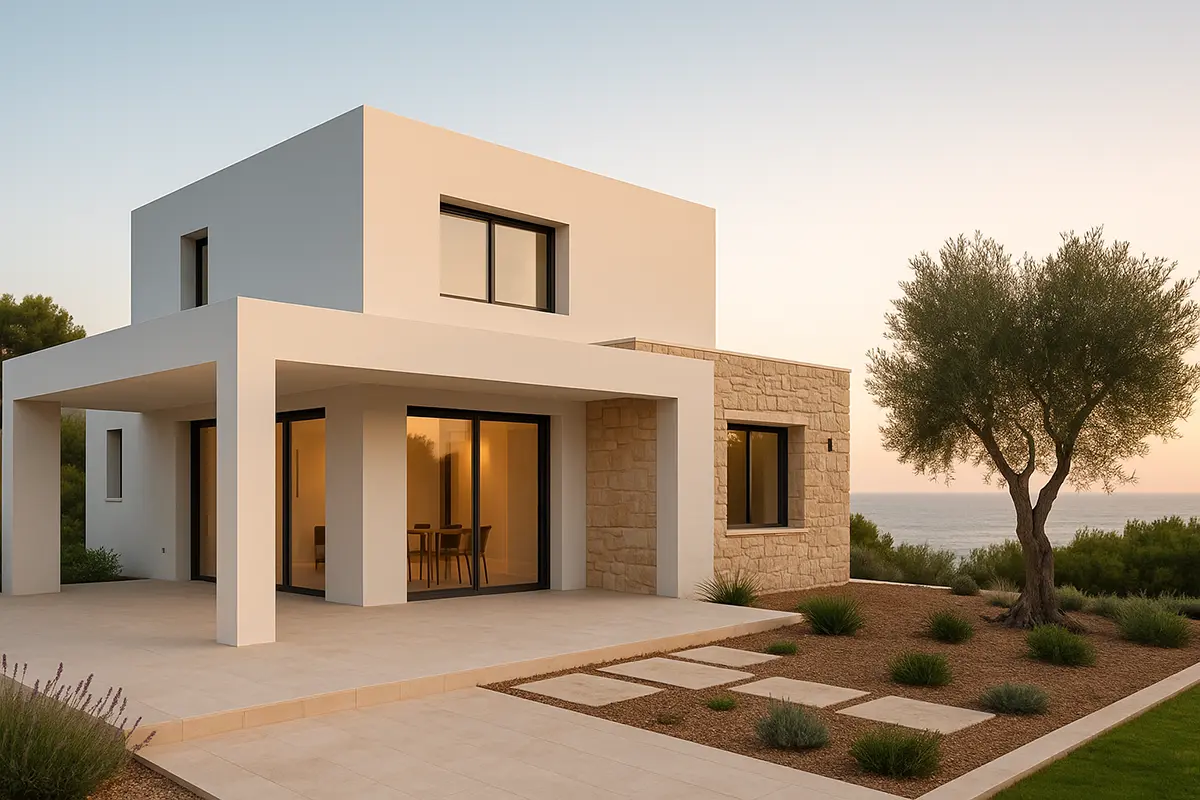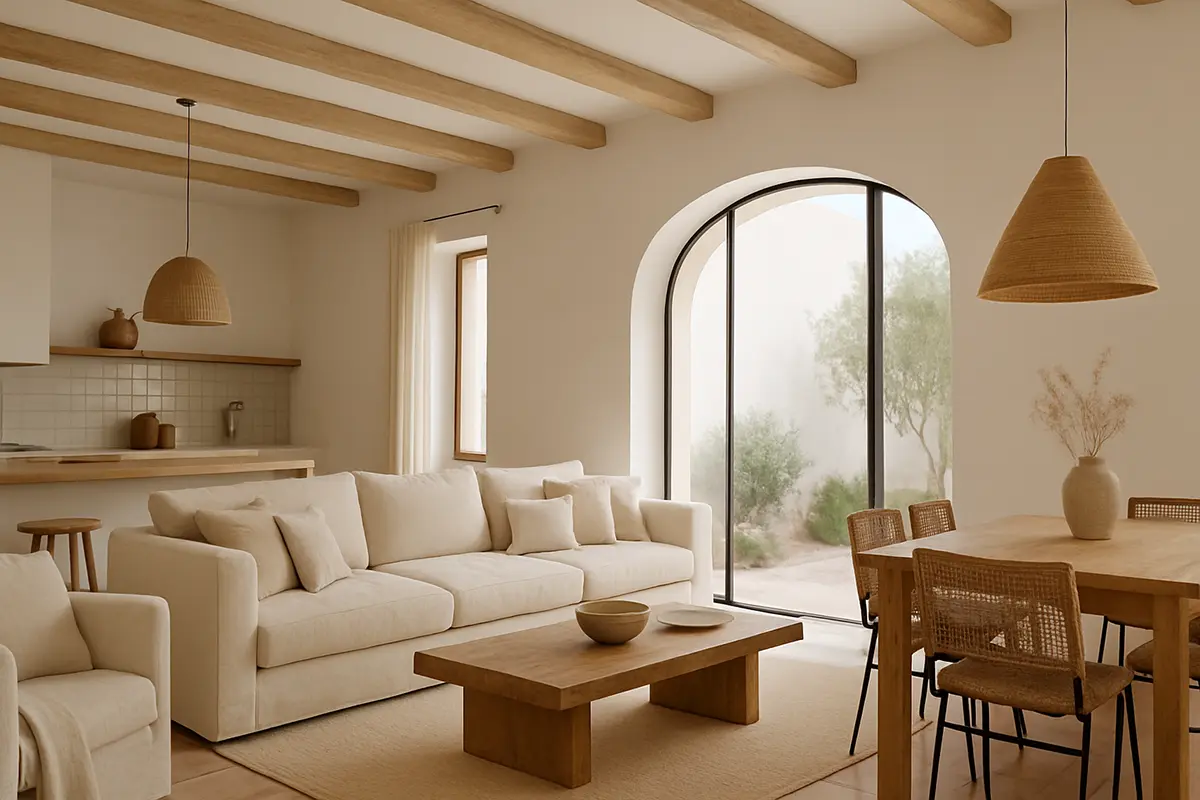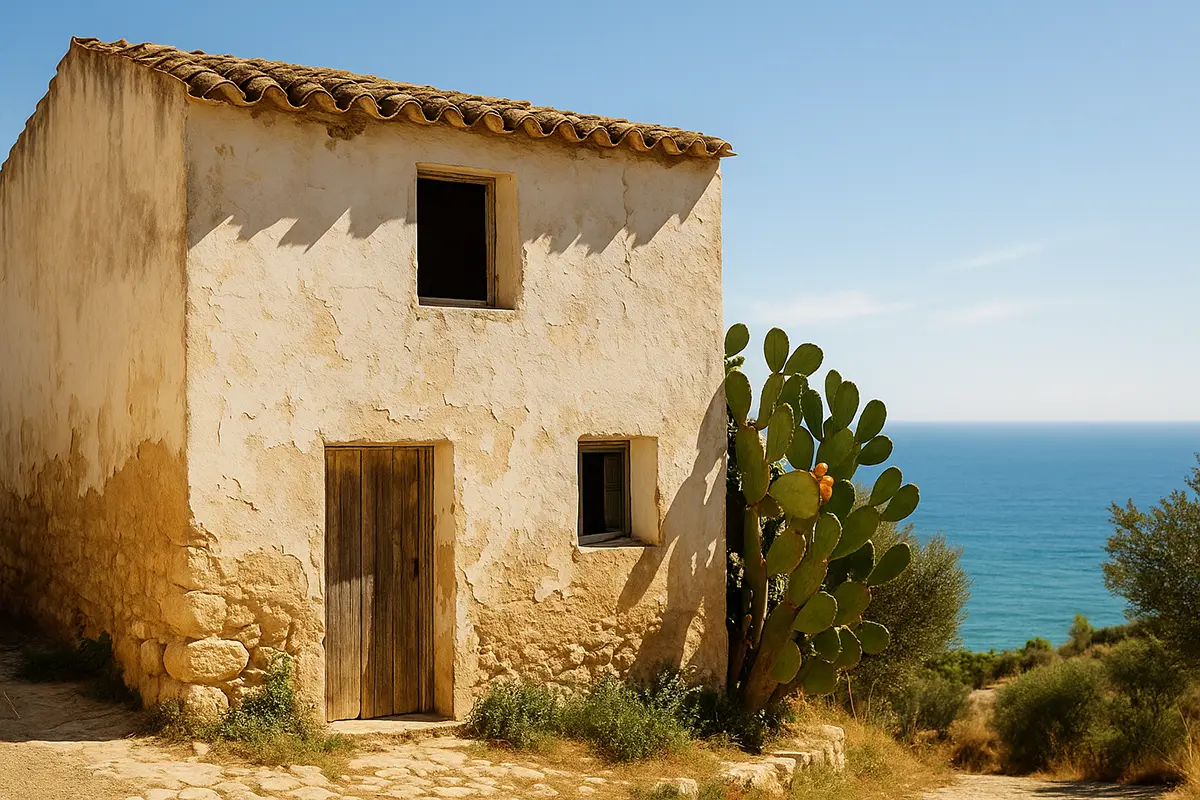Concrete slabs are a widely used type of pavement for both interior and exterior construction. This article will cover the different types of concrete, such as stamped, polished, or polymer, as well as the construction process of a slab, its mix ratio per cubic meter, and the minimum necessary thickness. We will also discuss the characteristics of concrete, its uses, finishes, prices, maintenance, and durability. Discover everything you need to know about concrete slabs at La Quinta Fachada, an architecture and interior design studio.
Types of Concrete Slabs
Precast Concrete Slab
The precast concrete slab is a popular choice in pavement construction. It is characterized by being manufactured under controlled conditions, away from the construction site, and then transported and installed at the desired location. This type of slab offers high strength and durability, in addition to ease of installation. It is available in a variety of dimensions and designs, allowing for adaptation to different architectural projects.
Reinforced Concrete Slab
The reinforced concrete slab is another common type of slab used in construction. It is characterized by having a reinforcing steel frame inside, which provides it with greater strength and load capacity. This type of slab is mainly used in large-scale structures, such as bridges, commercial buildings, and industrial facilities. The combination of concrete and steel provides a solid and durable structural solution.
Concrete Slab Construction Process
Constructing a concrete slab involves several important steps and considerations. Below, we explain each of them in detail.
Concrete Mix Ratio per Cubic Meter
The concrete mix ratio is a fundamental process to ensure the strength and quality of the slab. The exact amount of cement, aggregates, and water required per cubic meter (m3) of concrete must be determined. This proportion can vary depending on the type of slab and its intended use. It is advisable to have the advice of a professional to ensure optimal dosing.
Minimum Thickness of the Concrete Slab
The minimum thickness of the concrete slab is another crucial aspect to consider. This thickness will depend on various factors, such as the load that the slab will support, the intended use, and soil conditions. It is important to comply with the recommended minimum thicknesses to ensure the slab’s strength and durability.
Construction of the Concrete Slab
The concrete slab construction process includes several stages. First, the ground must be prepared, ensuring it is leveled and compacted. Then, the metal reinforcements, which will provide structural reinforcement to the slab, are placed. Next, the concrete is poured onto the surface, making sure it is well distributed and without air pockets. Subsequently, the curing process is carried out, which consists of keeping the slab moist for a determined period to achieve greater strength. Finally, the surface finishing is performed, according to the type of slab and the aesthetic or functional requirements.

Characteristics and Uses of Concrete Slabs
Uses of the Concrete Slab
Concrete slabs offer a wide variety of uses in the construction field. They are used both indoors and outdoors, adapting to different needs and projects. Some of the most common uses of concrete slabs include:
- Parking surfaces and parking lots
- Sidewalks and pedestrian paths
- Industrial floors and warehouses
- Platforms and patios
- Stairs and ramps
Thanks to their strength and durability, concrete slabs are a popular choice for projects requiring a traffic-resistant surface with a long lifespan.
Characteristics of Concrete
The concrete used in slabs has a series of characteristics that make it suitable for construction use. These characteristics include:
- High mechanical strength
- Good durability against weather conditions and chemical agents
- Low maintenance and easy cleaning
- Versatility in design and finishes
- Possibility of customization with pigments and stamps
These characteristics make concrete a versatile and functional option for different architectural projects.
Density and Strength of Concrete
The density of concrete refers to its mass per unit volume. Generally, a standard density of 2,400 kg/m3 is used for calculation and design purposes. On the other hand, the strength of concrete is measured based on its capacity to withstand external loads and forces without deforming or breaking. This strength is expressed in units of pressure, commonly used compression strength in MPa (megapascals).
It is important to consider the density and strength of concrete when designing and building a slab, as this ensures its stability and durability over time.
Finishes and Types of Concrete for Pavements
In this section of the article on concrete slabs, we will focus on the different finishes and types of concrete used for paving. These finishes provide both functionality and aesthetics to concrete floors.
Stamped Concrete
Stamped concrete is a popular option for exterior pavements. It involves pouring fresh concrete and applying a desired color and texture layer, which can mimic materials like stone, slate, or wood. This type of finish offers resistance, durability, and the possibility of creating custom designs.
Polished Concrete
Polished concrete is ideal for interiors, such as in commercial spaces or residential areas. It is achieved through a process of polishing and shining the concrete, leaving a smooth and glossy surface. This finish offers elegance, resistance, and easy cleaning.
Polymer Concrete
Polymer concrete is a versatile option for pavements both indoors and outdoors. It consists of a mixture of resins and concrete aggregates, which gives it greater flexibility and resistance. It also offers different color, texture, and finish options, adapting to different decorative styles.
Price and Construction Costs of Concrete Slabs
The price of a concrete slab per 100m2 can vary according to different factors, such as the region and the quality of the concrete used. It is important to note that, although concrete is a durable and resistant option, the construction cost can be considerable.
Price of Concrete Slab per 100m2
The price of a concrete slab per 100m2 can range between XXXX euros and XXXX euros, depending on the geographical location and the specific characteristics of the project. It is advisable to request several quotes from companies specialized in concrete slab construction to get a better idea of the costs.
Comparison of Costs with Other Materials
Compared to other paving materials, concrete slabs are usually more economical, especially in the long term due to their durability and minimal maintenance costs. Compared to natural stone pavements, such as marble or granite, concrete offers a more affordable option without compromising on strength and aesthetics. Although the initial price may be higher compared to wood or ceramic pavements, concrete offers greater durability and resistance in the long term, which can result in significant savings on repairs and replacements.
It is important to note that costs can vary depending on the geographical area and material suppliers. It is always recommended to consult with experts to get an accurate estimate of the construction costs of concrete slabs.
Maintenance and Durability of Concrete Slabs
Concrete pavements require certain care and maintenance to ensure their optimal condition and durability over time. Below are some recommendations for their proper conservation:
- Perform regular cleaning: It is important to keep the concrete pavement free of dirt, dust, and other residues. It is recommended to sweep or use a pressure water hose to remove dirt.
- Avoid the use of aggressive chemicals: For cleaning, it is preferable to use mild detergents or specific products for concrete pavements. Avoid using corrosive products that may damage the surface.
- Repair possible cracks or damage: Cracks or defects in the pavement should be repaired as soon as possible, as they can worsen over time. It is advisable to use concrete repair products and follow the manufacturer’s instructions.
- Protect the pavement from weather conditions: Concrete can be affected by changes in temperature, humidity, and atmospheric agents. To protect it, a specific sealer can be applied to help prevent damage caused by weather action.
Resistance and Durability of Concrete Outdoors
Concrete is a material widely used in exterior pavements due to its resistance and durability. Below are some relevant characteristics and considerations:
- Compression resistance: Concrete has high compression resistance, making it ideal for supporting heavy loads and constant traffic without significant deformation.
- Abrasion resistance: Concrete pavement is resistant to wear caused by friction and the continuous passage of people, vehicles, or other elements. This makes it a durable option for areas with high traffic.
- Resistance to chemical agents: Concrete is resistant to many common chemicals, such as acids, oils, and solvents. However, it is advisable to clean up any spills quickly to prevent long-term damage.
- Pigmentation and textures: Concrete can be customized through pigments and textures, allowing for the creation of attractive designs tailored to aesthetic tastes and needs.
For more information on concrete slabs, contact us.
Error: Contact form not found.




